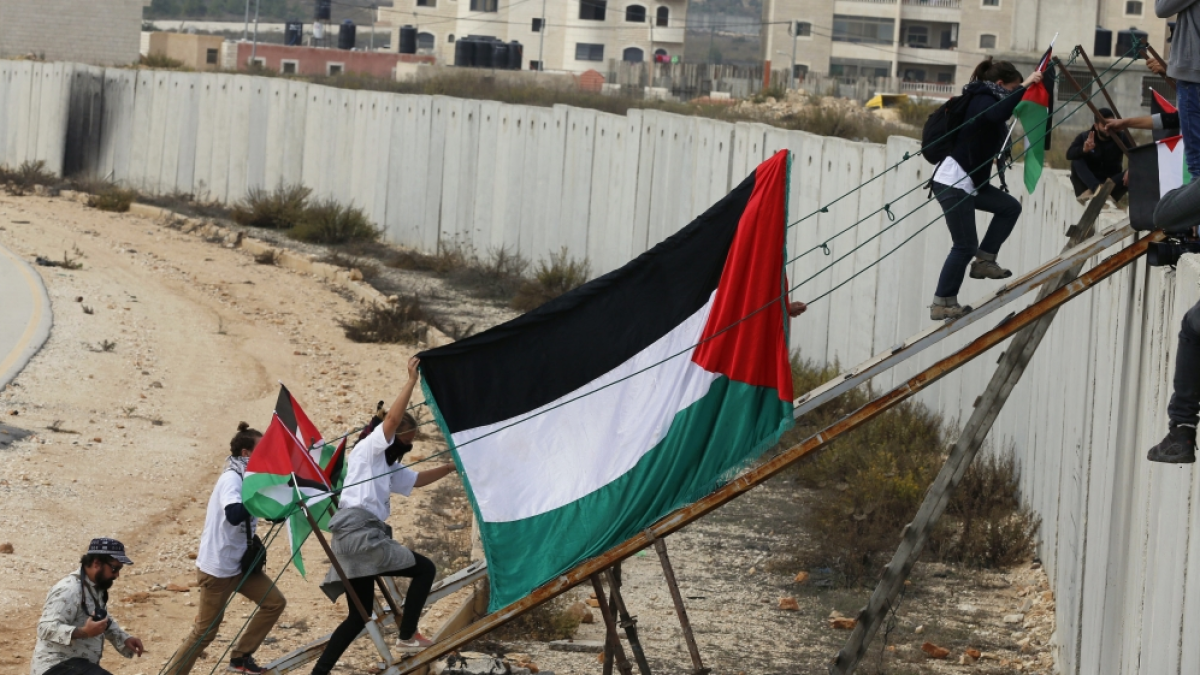-
- The Interplay of International Law in Israeli-Palestinian Conflict Zone
Since 1967, the Palestinian territory, encompassing the Gaza Strip, the West Bank, and East Jerusalem, has been under occupation of the State of Israel. Although Israel claims to have unilaterally withdrawn from Gaza since 2005, its armed forces had already struck Gaza four times in the preceding thirteen years. The UN has long placed this issue on its agenda. “If there is a hell on earth, it is the lives of children in Gaza.” was how the UN Secretary-General once described the situation in Gaza. At its Tenth Emergency Special Session on December 8, 2003, the UNGA decided to request an advisory opinion from the ICJ in accordance with Article 96 of the Charter of the UN, on the Legal Consequences Of The Construction Of A Wall in the Occupied Palestinian Territory. The Court rendered its decision in 2004, examined here below. To be noted, this was the first time the Court has addressed the fundamental legal discussions about the Gaza Strip. It is also worth noting that the GA once again, on December 30, 2022, requested the Court’s advisory opinion on “Israeli practices affecting the human rights of the Palestinian people in the Occupied Palestinian Territory” per the Resolution of 77/24. The Court is currently dealing with it.
Evidently, the Israeli occupation has prompted intense legal scrutiny in the realm of international law. This commentary embarks on a comprehensive exploration of the legal consequences of the occupation of Palestine by analyzing key judgments by the ICJ.
Returning to the Wall Advisory Opinion, which scrutinized the legality of Israel’s construction of a barrier on Palestinian territory, the Court’s first finding was that the territories situated between the Green Line (i.e. the 1949 armistice line) and the former eastern boundary of Palestine under the Mandate were ‘occupied territories’ under customary international law, in which Israel had the status of occupying Power. Article 42 of the 1907 Hague Regulations, whose binding force is also derived from customary international law, qualifies a territory as occupied ‘when it is actually placed under the authority of the hostile army. The occupation extends only to the territory where such authority has been established and can be exercised’. As long as there is a de facto occupation, the ‘law of occupation’ applies, whether or not the occupation is deemed lawful.
In addition to Hague Regulations of 1907, the four Geneva Conventions of 1949, apply to any territory occupied during armed conflicts pursuant to common Article 2. As regards the population living in the occupied Palestinian Territories, the ICJ held that the Geneva Convention IV was applicable. The GIV covers the protection of civilians and becomes operational following the start of the occupation or hostilities. Indeed, it only applies to persons ‘who, at a given moment and, in any manner, whatsoever, find themselves, in case of a conflict or occupation, in the hands of a party to the conflict or occupying power of which they are not nationals’ according to its Article 4.
Contemporary international humanitarian law imposes certain rights and obligations on occupying powers within the framework of the abovementioned legal instruments, especially when it comes to protection of civilians in the occupied territories (see GIV Arts. 47–78; API Arts. 63, 69, 72–79). The Article 43 of the Hague Regulations, setting out the fundamental principles of the law of occupation provides that ‘The authority of the legitimate power having in fact passed into the hands of the occupant, the latter shall take all the measures in his power to restore and ensure, as far as possible, public order and safety, while respecting, unless absolutely prevented, the laws in force in the country.’.
Whilst this latter provision does not contain explicit references to fundamental human rights, pursuant to the ICJ’s interpretation in the Armed Activities, it entails ‘the duty to secure respect for the applicable rules of international human rights law and international humanitarian law, to protect the inhabitants of the occupied territory against acts of violence.’ (para.178)
However, when the Court handled the Wall , Israel denied that the ICCPR and the ICESCR were applicable to the occupied Palestinian territory. Israel’s position was that “humanitarian law is the protection granted in a conflict situation such as the one in the West Bank and Gaza Strip, whereas human rights treaties were intended for the protection of citizens from their own Government in times of peace.”(para. 102)
The question of the applicability of human rights law where international humanitarian law is also in force is therefore important, especially when they both regulate the same subject matter, such as the right to life.
In the Wall, the Court examined the relationship between international humanitarian law and human rights law to scrutinize Israeli claims. It found that there are three possible situations: some rights may be exclusively matters of international humanitarian law; others may be exclusively matters of human rights law; yet others may be matters within the scope of both these branches of international law, i.e. human rights law and as lex specialis, international humanitarian law.
The Court ruled that the protection offered by human rights conventions does not cease in case of armed conflict, (para.106) notwithstanding the provisions on derogations of the kind contained in Article 4 of the ICCPR. The Court additionally examined the extraterritorial application of the ICCPR and the ICESCR. Extraterritorial application of human rights instruments refers to the enforcement of these instruments where a State party exercises jurisdiction outside its territory. It is established by the Court that the occupied Palestinian Territory has been subject to Israel’s territorial jurisdiction as the occupying Power since 1967. (para.109) The Court held that Covenants are applicable, with respect to acts committed by a State in the exercise of its jurisdiction outside its own territory. (paras .111-2) In the Armed Activities case, the ICJ has reaffirmed this conclusion for the International Covenants on Human Rights, the Convention on the Rights of the Child and the African Charter on Human and Peoples.’ (para. 217)
According to the Court’s findings, the construction of such a wall constitutes a violation of Israel’s obligations under certain human rights instruments and it cannot be ‘justified by military exigencies or by the requirements of national security or public order.’. (para.137) To provide some examples, the liberty of movement as guaranteed under Article 12, paragraph 1, of the ICCPR and the right to work, to health, to education and to an adequate standard of living as proclaimed in the ICESCR were impeded by Israel.(paras. 128, 134)
Furthermore, the Court held that certain obligations violated by Israel were erga omnes. These were defined in the Barcelona Traction Case as obligations owed not only to a particular State but rather to the international community as a whole. (para.33) In regard to non-self-governing territories, the right of peoples to self-determination was found to be erga omnes. (para.155) The acts committed by Israel in the occupied Palestinian Territory, inter alia, the construction of a “wall” indeed violated the obligation to respect the right to self-determination of the Palestinian people.
The obligations arising from international humanitarian law, breached by Israel were also essentially of an erga omnes character. (para.157)
As already pointed out, erga omnes obligations concern all States as components of the international community. Such a characterization means that Israel’s unlawful acts have consequences not only for itself but also for other States, such as the obligation to not recognize the illegal situation resulting from the construction of the wall in the Occupied Palestinian Territory, not provide assistance or support to maintain said-situation and lastly to ensure that all obstacles to the exercise of the right of the Palestinian people to self-determination resulting from the construction of the wall are removed.(para.159) Therefore, it can be concluded that the effects of the complexity of the Israeli-Palestinian conflict are not limited to these two which will be discussed further on.





